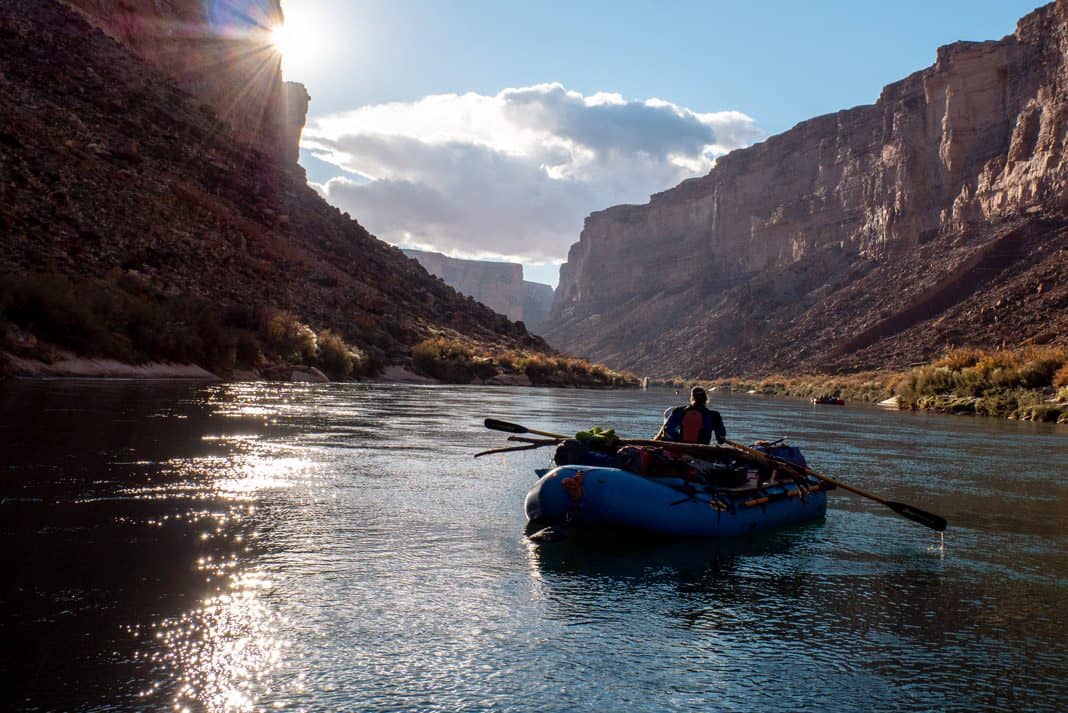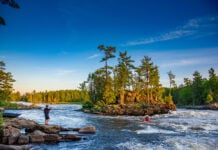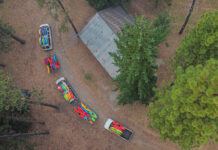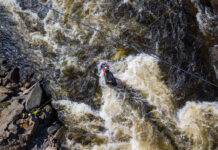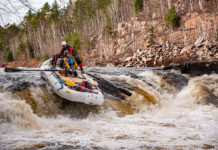I’ve taken to drinking scotch. I’ve never been much of a drinker, really, and I’m still not. I became interested in scotch on a bit of a whim, tagging along on a tasting evening hosted by a kilted guy with a thick brogue. It is an acquired taste, but Mr. MacKilt neatly opened the door to understanding the drink.
There were many samples to taste as one would expect, but there was also wood from the barrels, maps of the different regions, a thousand years of cultural history told with humor, and photos of 100-year-old distilleries still operating today.
There was a whole story. I felt like I understood what I was holding in my hand, even if it tasted like smoky leather and burned my throat. I knew the story of the lovely amber liquid in my glass, and that made all the difference.
How drinking scotch relates to running rivers
Let me explain.
I love river trips—the whole trip though, not just the exciting bits or the paddling parts. I love the early possibilities and preliminary ideas, finding the maps and digging for the info I need to connect the dots.
I love the gear lists and sorting and garage floor covered in equipment and food bags; closing my eyes trying to envision where everything will get rigged. I love loading the trucks and figuring out the shuttle.
The importance of details was hammered into me as a guide. One of my early mentors, a trip leader by the name of Walt Wolfe, would quote Laurence Bell: “Show me a person who cannot bother to do the little things and I will show you a person who can’t be trusted to do the big things.”
It’s all about the little things
I grew to take pride in my ability to deliver on the little things. Importantly, though, I grew to realize how big things are made up of so many small details. Which is how it is with rivers.
I love reading about where I’m going. The seasons, the geology, the fish, and who owns the land. Where does this river come from and where does it go, who ran it first and, more importantly, why.
What else is going on upstream and down, how the locals make a living, or who lived there before my people showed up. The whole story. Not just logistics of a trip, but the story of a whole place. All of the little things assembled into a big, meaningful thing.
This all occurred to me while looking at the large wall map of Scottish distilleries. In those early days, I was somewhat ambivalent about the flavor of what was in my glass, but even then, I really appreciated and felt connected to everything about it.
The real river story
The details of barley and water and a cultural history combined into something much bigger. Likewise, it is for this connection I sow the seeds on my river trips, something I look forward to as much as the river running itself.
Make no mistake, I love rigging the boats every morning, and being pulled by the current, and rapids spice up the adventure.
But it is the story of the river that makes the whole endeavor absorbing and worthwhile.
The thousand details of putting a trip together means the travel goes smoothly; the thousands of details of what makes a place a place provides some meaning to what I see and experience.
Paddling downstream is connecting the dots on the map, combining the little things into something bigger.
Jeff Jackson is an outdoor education professor at Algonquin College and a risk management consultant. His regular column, Alchemy, shares lessons learned from a life on the river.
“Too much of anything is bad, but too much good whiskey is barely enough.”—Mark Twain
Photo: Caleb Roberts



